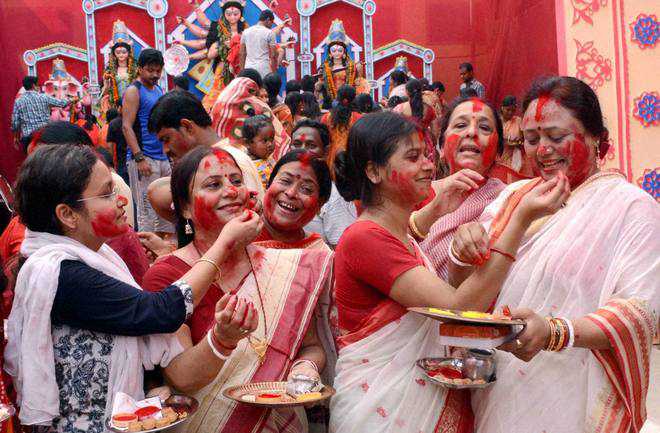
Despite its pretence of celebration, this is really a book of bitter lamentation: of the history of brutality visited upon the Bengali by the Bengali, of the ever-precarious binaries — Hindu and Mussulmans, chhotolok and bhadrolok — which have undermined and ruptured the greater Bengali identity.
Anshuman Acharya
Arguably, no ethno-linguistic group has had more say in shaping the narrative of modern India as the Bengalis. The Bengalis are everywhere — colluding with the Malyalis to make the overwhelming bulk of the nation’s meager supply of intelligentsia, writers, painters, critics, classical musicians, economists and dissenters. Thus, for a non-Bengali reader of Sudeep Chakravarti’s ambitious The Bengalis: A Portrait of a Community, to understand the Bengali psyche is in a way to arrive at the foundry where much of the nation’s destiny has been cast — the prototypal Macaulayan babu, the first Hindu reformers, first revolutionaries, first partition, the Direct-Day massacre presaging the butchery to follow, the Mahalanobis model, and of course, the Naxalites.
The Bengalis... does manage to cover much ground here, drawing on extensive archival and firsthand research as it patently aspires to become the compendium of its people: the history and habits of the whole quarter billion making up the greater “Banglasphere”, as the author calls it — east, west, and north-east — rent by internecine bickering and bloodbaths, but still united in “mind, body and spirit”.
Structurally, the book is divided into three parts, covering the genesis of Bengalis leading up to the Partition (the 1947 one – one needs to point out), the self-explanatory Cultural Chronicles, and the incandescent Age of Fire, the volatile history of modern Banglaland. Its own divisions notwithstanding, one feels it is really three books trussed into one — a history book account, a memoir and a roman-fleuve — an indulgent account of the psyche and eccentricities abounding in one’s own family. These three pieces sit together somewhat uneasily, the sutures not altogether flush, as the transitions are sometimes too jarring, the change in tone and style too abrupt and inconsistent.
Of these, the commentaries on the geography, culture and pre-modern history are especially tedious: long, meandering, over-claused sentences (the author refers to this writing as “freewheeling”), that wallow more than inform. These abound with strange lexical choices (the growing oeuvre of fundamentalist Islam), troikas of alliterations (seemingly seamlessly structured) followed in the next paragraph with (filth of flailing faiths), mixed metaphors (creamy layer of the Hindus’ very own battering ram), stagy musings like the one the author suffers from at the site of Meghalayan riverheads, and hyperventilating rhapsodies on every Bengali cliché of its seasons, colours, women, culture and food.
These fustian meanderings take much away from an otherwise compact and brilliant work. In fact, even in these weaker, uninspired sections, the author does ultimately manage to take an ironic and even searingly critical stock of his people, in a prose that sometimes rises from these prolix ramblings to dazzling virtuosity, like the breathless nutshell of the Bengali appearing in the back cover.
And nowhere is this contrast brought out more than when the author draws from accounts of his family’s many bitter encounters with history and his own experiences as a reporter covering the killing fields of Partition and Maoist insurgencies. Here, the sauntering “freewheeling” prose suddenly straightens and gathers a sober purposiveness; becomes an unflinching wade through the heart of darkness. The clipped descriptions of Noakhali and Naxalbari are worthy of Hemingway.
Perhaps, the author could have taken a leaf from Amitav Ghosh, whom he refers to respectfully, and curtailed his ambition to a tight collection of essays along the lines of Dancing in Cambodia… – for despite its pretence of celebration, this is really a book of bitter lamentation: of the history of brutality visited upon the Bengali by the Bengali, of the ever-precarious binaries — Hindu and Mussulmans, chhotolok and bhadrolok — which have undermined and ruptured the greater Bengali identity. Of this squandering of so many chances to redeem ourselves.
It is this sincere lived anguish, coupled with the sharp unpeeling eye that redeems The Bengali... and earns it a space in any respectable shelf on the history of its people.



























